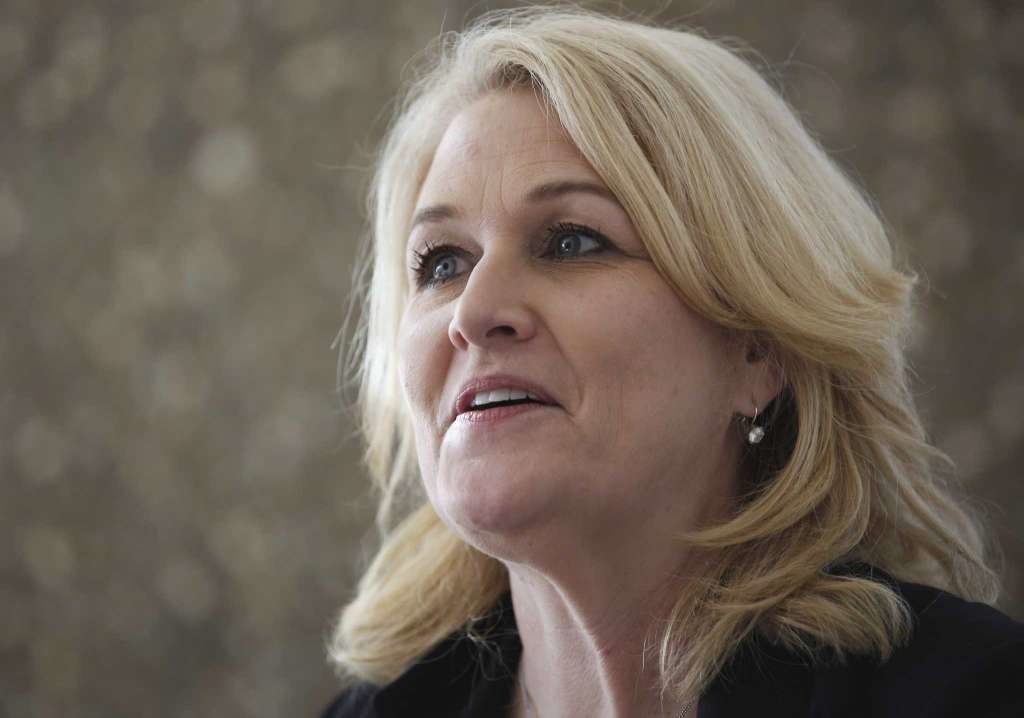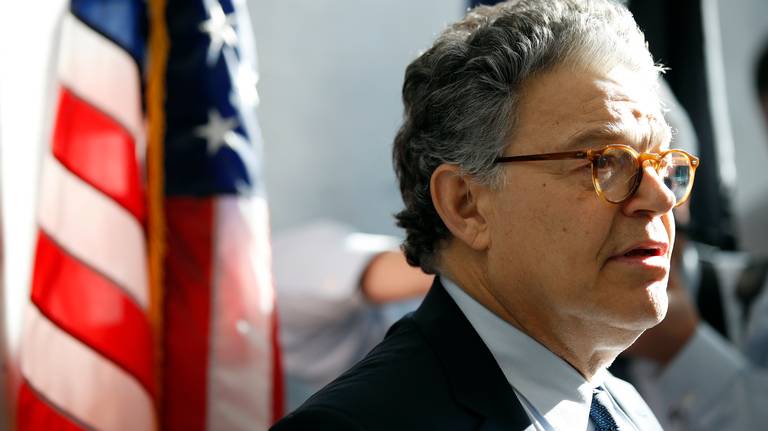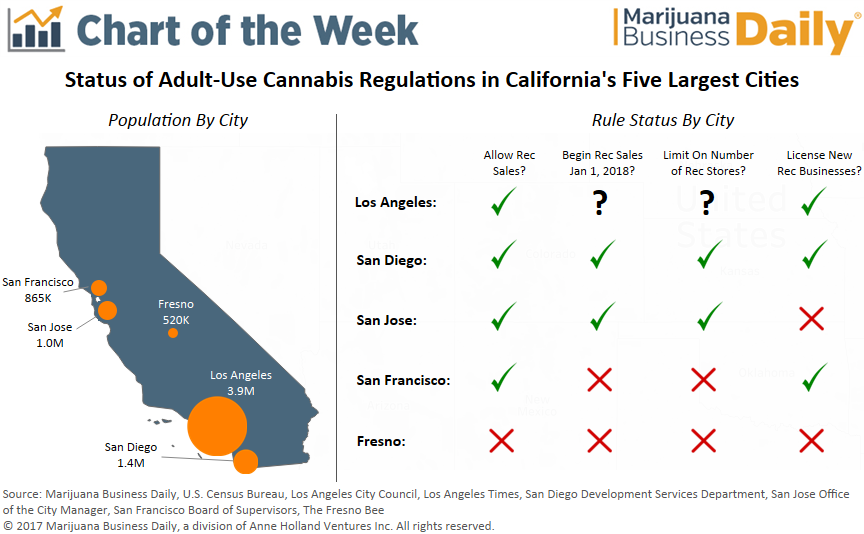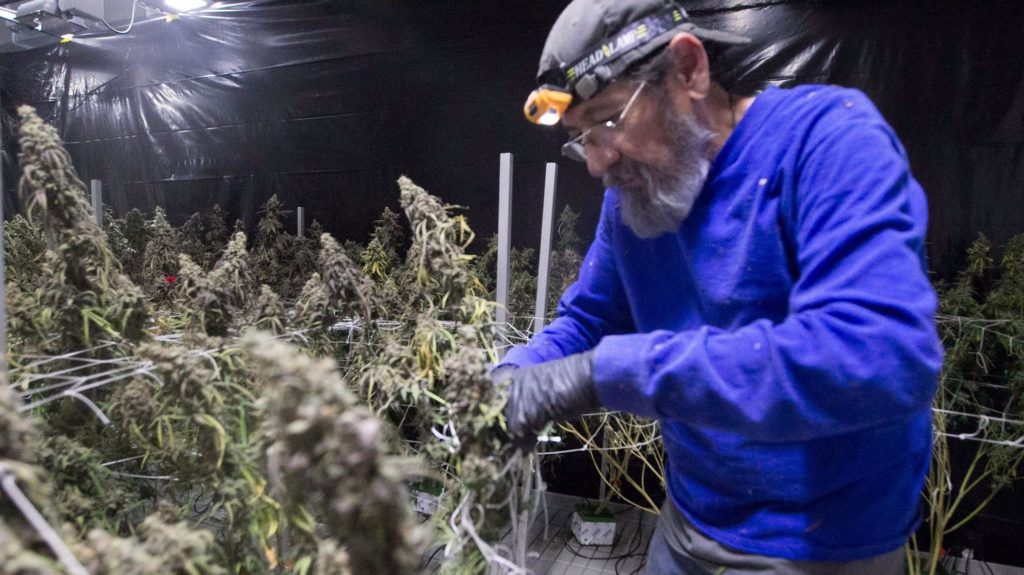San Diego finalized its legalization of marijuana cultivation and manufacturing on Tuesday, becoming one of the few cities in the state to have a fully regulated supply chain for the drug.
Making indoor pot farms and manufacturing sites for edible products legal will boost the economy, create jobs and improve the quality and safety of local marijuana, City Council members said before approving the legislation in a 6-3 vote.
They also said a local supply chain will eliminate the need to truck marijuana in from elsewhere, and prevent a local “black market” of unregulated cultivators and manufacturers that would emerge if the city outlawed those activities.
“I believe it’s our obligation as the City Council to have responsible regulation of all parts of the supply chain,” said Councilwoman Barbara Bry, stressing that state voters easily approved legalizing recreational marijuana last November.
Opponents said allowing local cultivation and manufacturing will increase organized crime in San Diego and place a heavy burden on local police, emphasizing that Police Chief Shelley Zimmerman strongly opposed the legislation.
“We have to listen to our police officers and not people who want to make a profit off of this,” said Councilwoman Lorie Zapf, who joined with fellow Republican Councilmembers Chris Cate and Scott Sherman as the “no” votes.
Opponents also said city officials didn’t solicit enough public input when crafting the new legislation, contending the local marijuana industry was allowed to have too much influence.
Councilman Mark Kersey, a Republican who joined the council’s five Democrats in support of the legislation, said it’s important to regulate the drug properly now that it’s been legalized by state voters, including 61.6 percent approval in San Diego.
“My focus now is on implementing the will of the voters in the absolute safest way possible, while minimizing impacts to our communities,” said Kersey, noting that some pot farms and factories have been operating locally in quasi-legal fashion without being magnets for crime. “The ordinance before us is a logical and responsible addition so that we can regulate these facilities.”
The council, which gave the city legislation the first of two necessary approvals on Sept. 11, tweaked the regulations on Tuesday to require that marijuana production businesses have “odor-absorbing ventilation and exhaust systems.”
The goal is preventing people passing by indoor pot farms or manufacturing operations from being overwhelmed by the sometimes pungent odor of marijuana, especially when many pounds of it are together in the same place.
The council also took the less controversial step of allowing marijuana testing facilities in the city.
The approvals complete a local supply chain, because San Diego legalized sales of medical marijuana at city-approved and tightly regulated dispensaries in 2014, and agreed earlier this year to allow those dispensaries to expand their sales to recreational customers when new state laws take effect in in January.
The city has approved 17 such businesses, and 11 have begun operating.
Zapf said she was frustrated that the new legislation was crafted without much public input.
“There was no community outreach, no community groups involved,” said Zapf. “The public was left out of this.”
Jeff Murphy, the city’s planning director, said an enormous amount of community input was gathered at public hearings a few years ago when the city legalized dispensaries.
Phil Rath, executive director of the United Medical Marijuana Coalition, stressed that the community will get a chance to weigh in on every proposed marijuana production facility at multiple public hearings required before each gets approved.
The hearing also included some more general assertions that marijuana is a “gateway” drug to opioids, contributes to mental illness and is marketed to teens.
“Everywhere you go where ordinances like this have been placed, more teens are using,” said Scott Chipman, leader of an anti-marijuana group called San Diegans for Safe Neighborhoods.
Federal data shows that teen marijuana use in Colorado fell in 2014 and 2015 after the state legalized recreational marijuana. Conversely, use among adults increased during the same time period.
Opponents also complained that if allowing cultivation and manufacturing was truly about creating a local supply chain, the city should have prohibited the new production facilities from exporting their products outside the city or region.
They also criticized the council for loosening a cap on the number of production facilities that will be allowed to open in the city.
Planning staff had proposed a maximum of two in each of the city’s nine council districts, but lobbying from local industry leaders prompted the council to opt instead for a citywide cap of 40.
The new odor restrictions, which Councilman David Alvarez supported aggressively, were carefully written to avoid conflict with state marijuana laws, which don’t regulate odor.
So instead of adopting citywide “public nuisance” legislation governing odors, the council will include in each operating permit for marijuana production facilities an odor requirement that says:
“The facility shall provide a sufficient odor absorbing ventilation and exhaust system capable of eliminating excessive or offensive odors causing discomfort or annoyance to any reasonable person of normal sensitivities standing outside of the structural envelope of the permitted facility.”
Supporters say legalizing a recreational marijuana supply chain will boost city revenue because San Diego voters approved a local tax last November that would start at 5 percent and rise to 8 percent in July 2019.
That tax, which could rise as high as 15 percent with council approval, would apply to pot farms and factories as well as dispensaries. But it wouldn’t apply to sales of medical marijuana.
Mayor Kevin Faulconer, a Republican, could veto the new legislation. But the six votes necessary to override his veto appear to be firmly in place, with the legislation being approved the council 6-3 on Sept. 11 and on Tuesday.
The only other cities in the county that allow dispensaries are La Mesa and Lemon Grove, where voters forced the hands of city leaders by approving ballot measures last November. And only La Mesa has indicated it may allow cultivation.
credit:420intel.com













